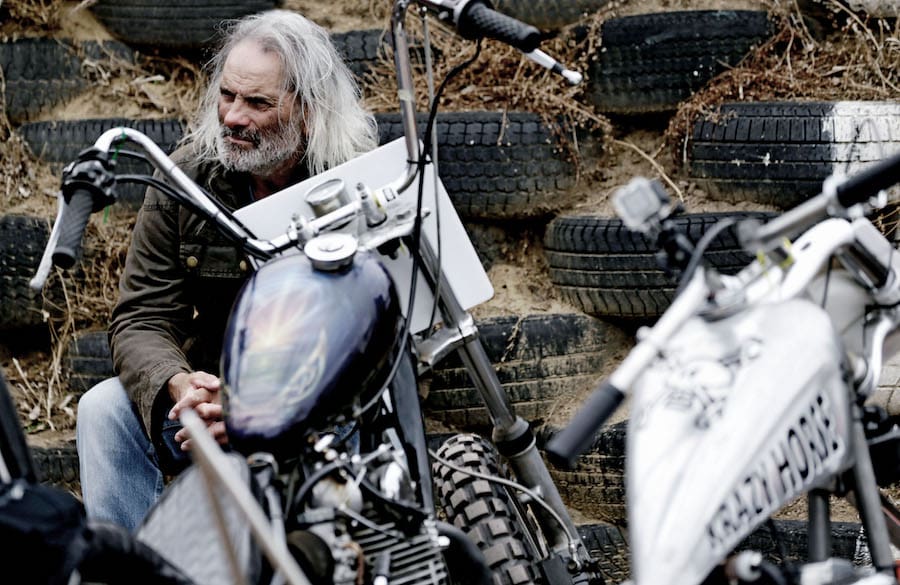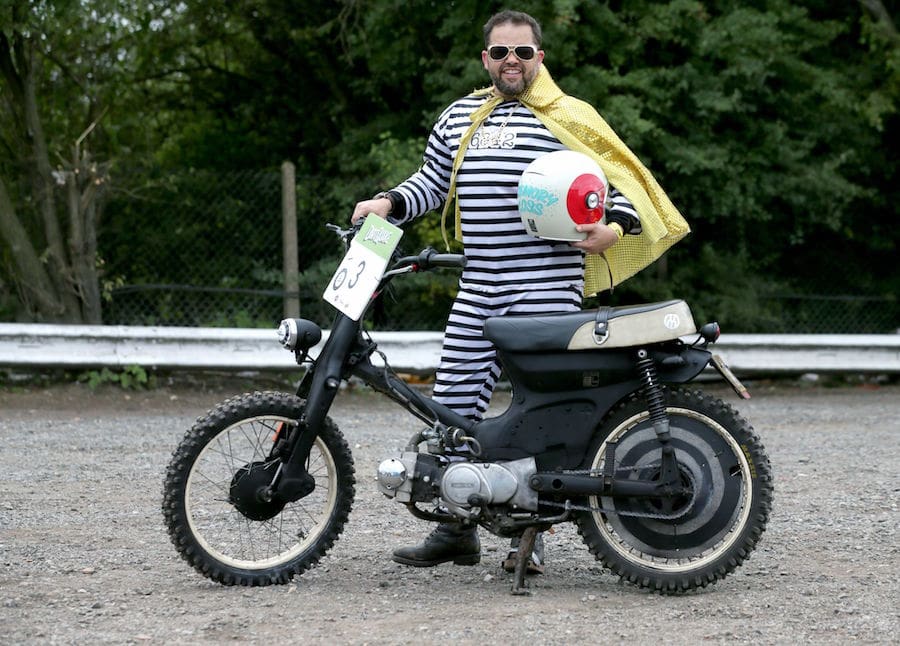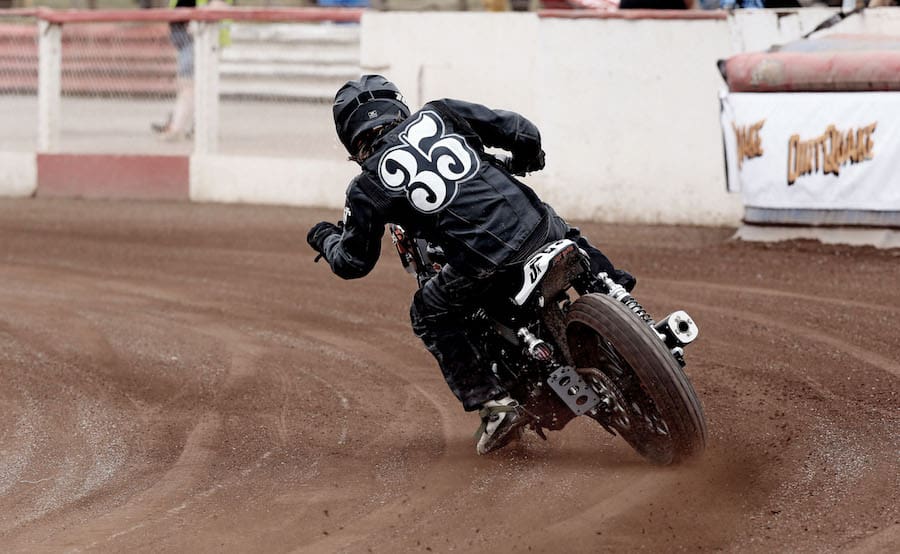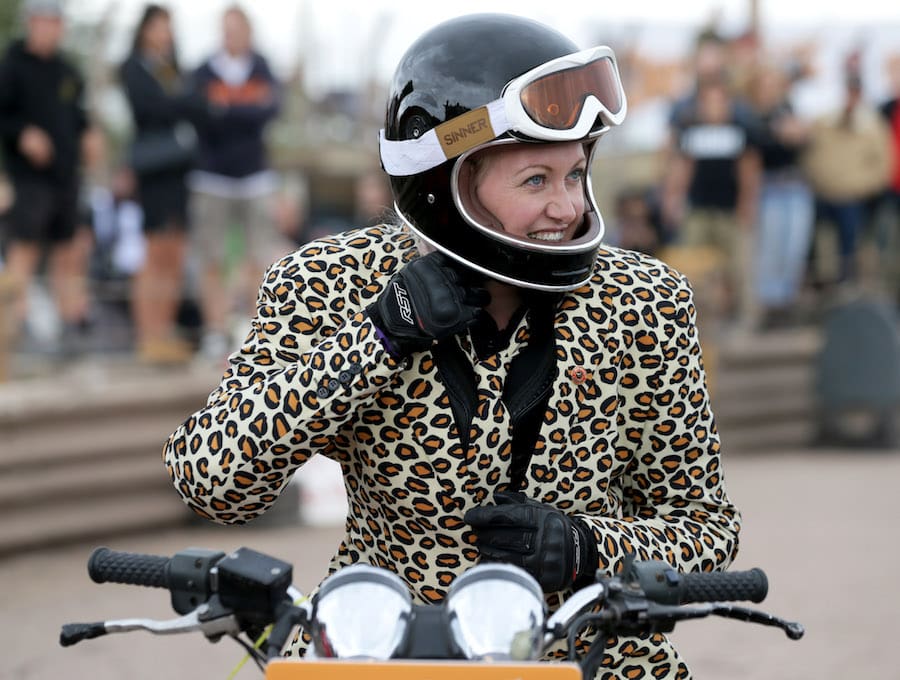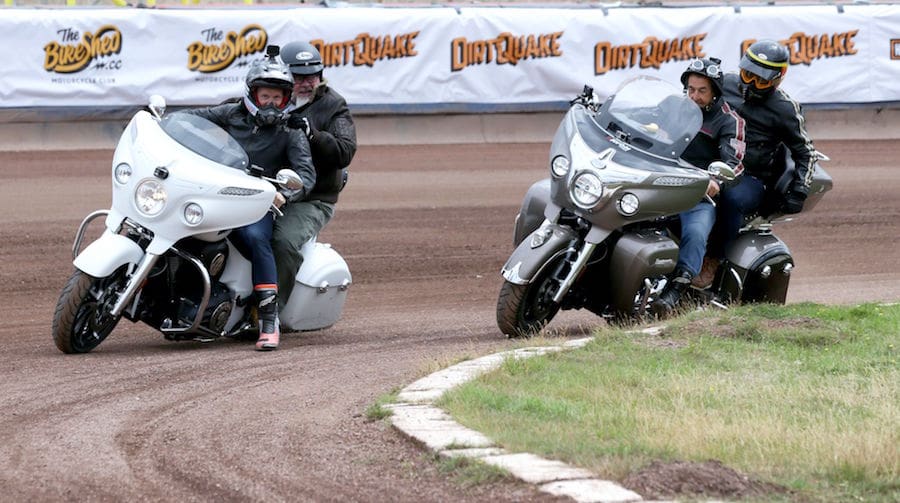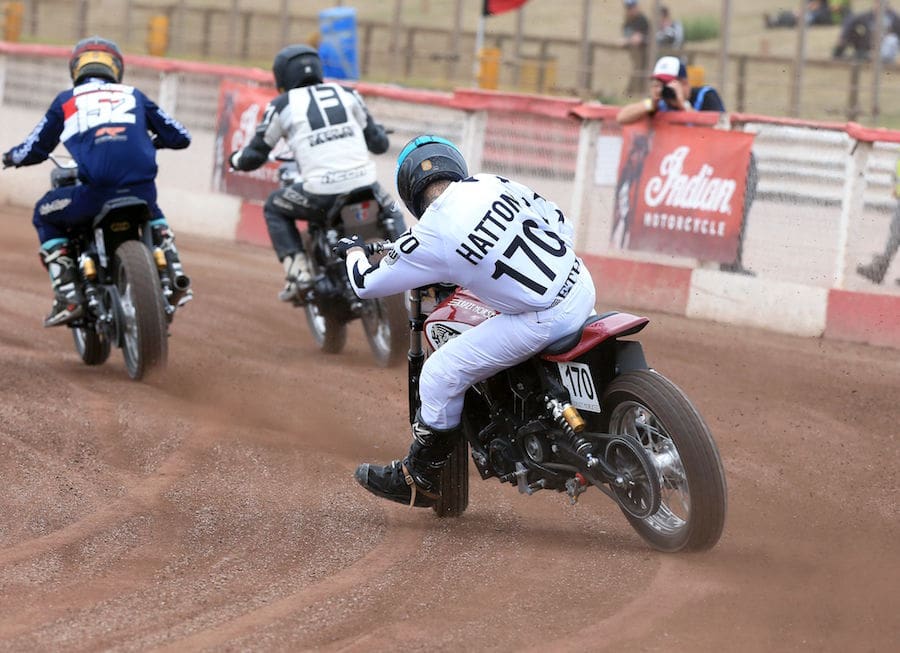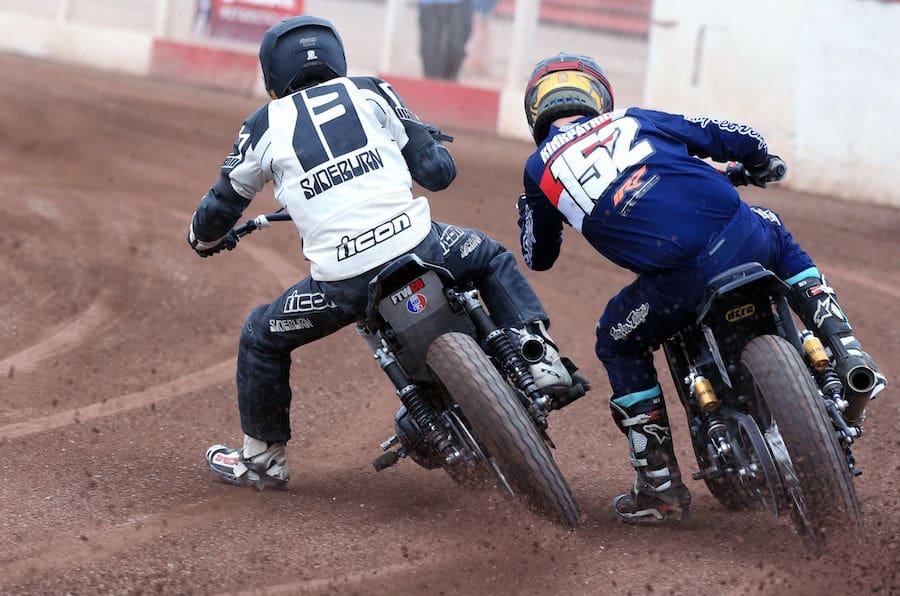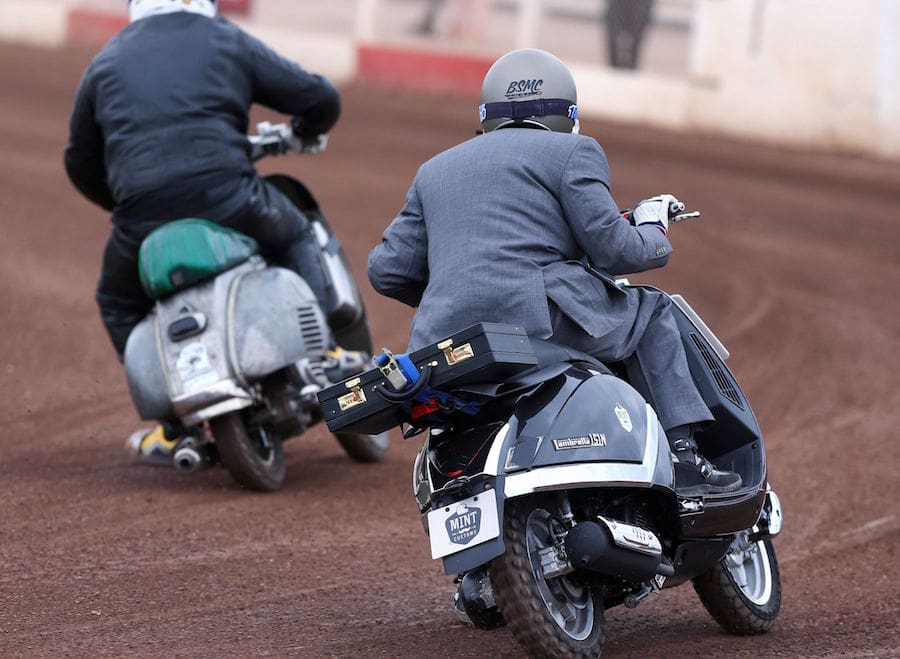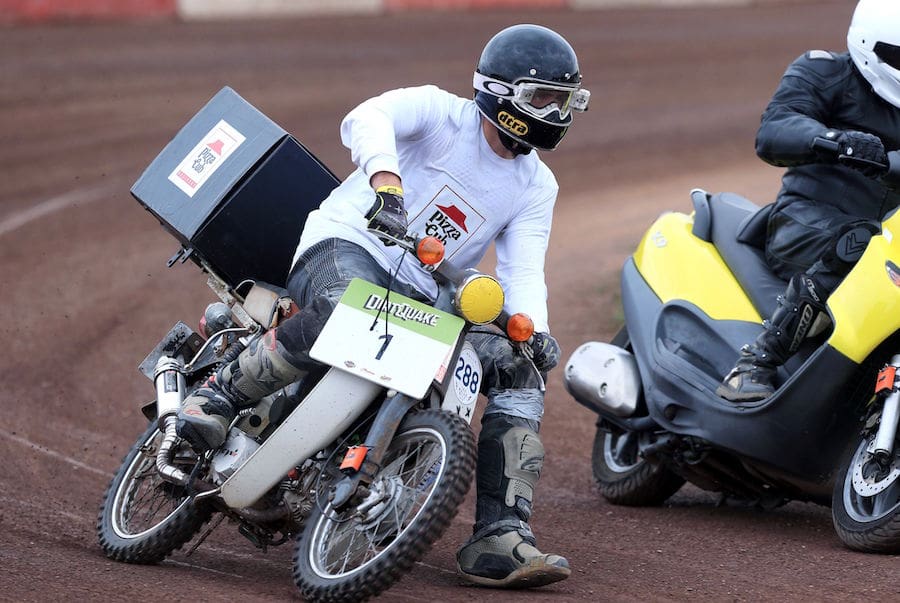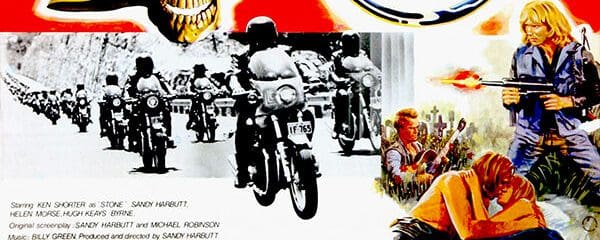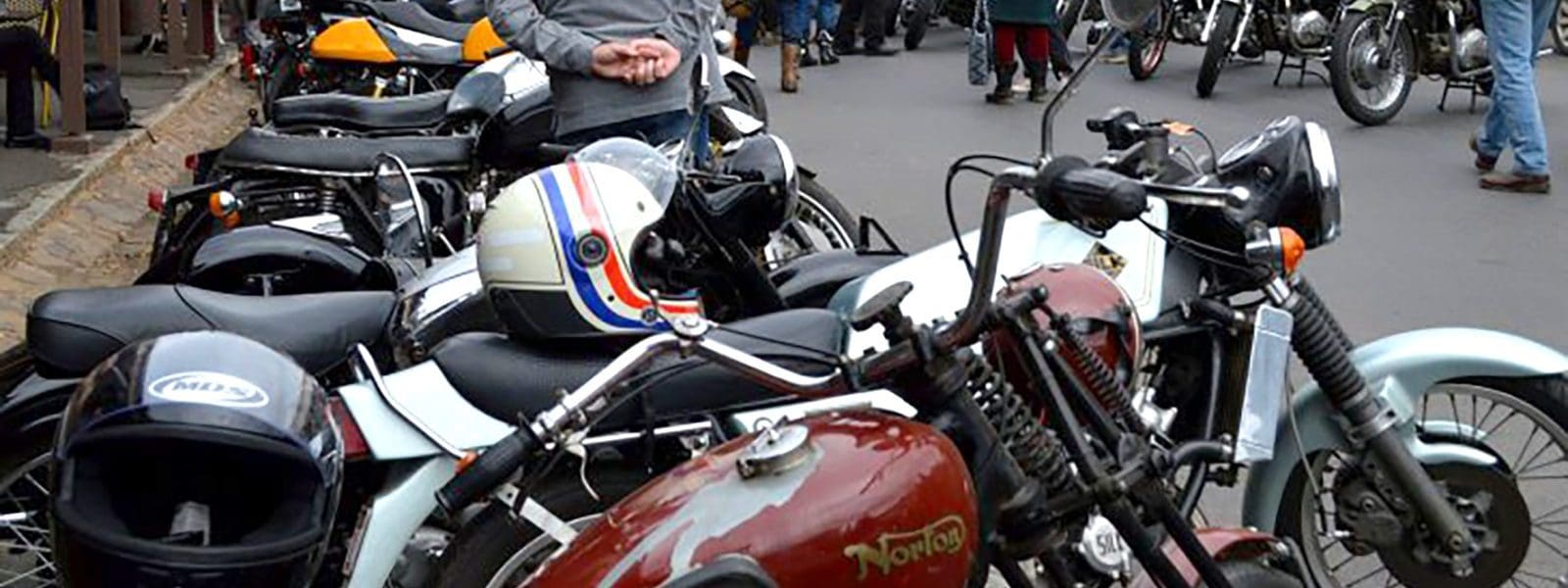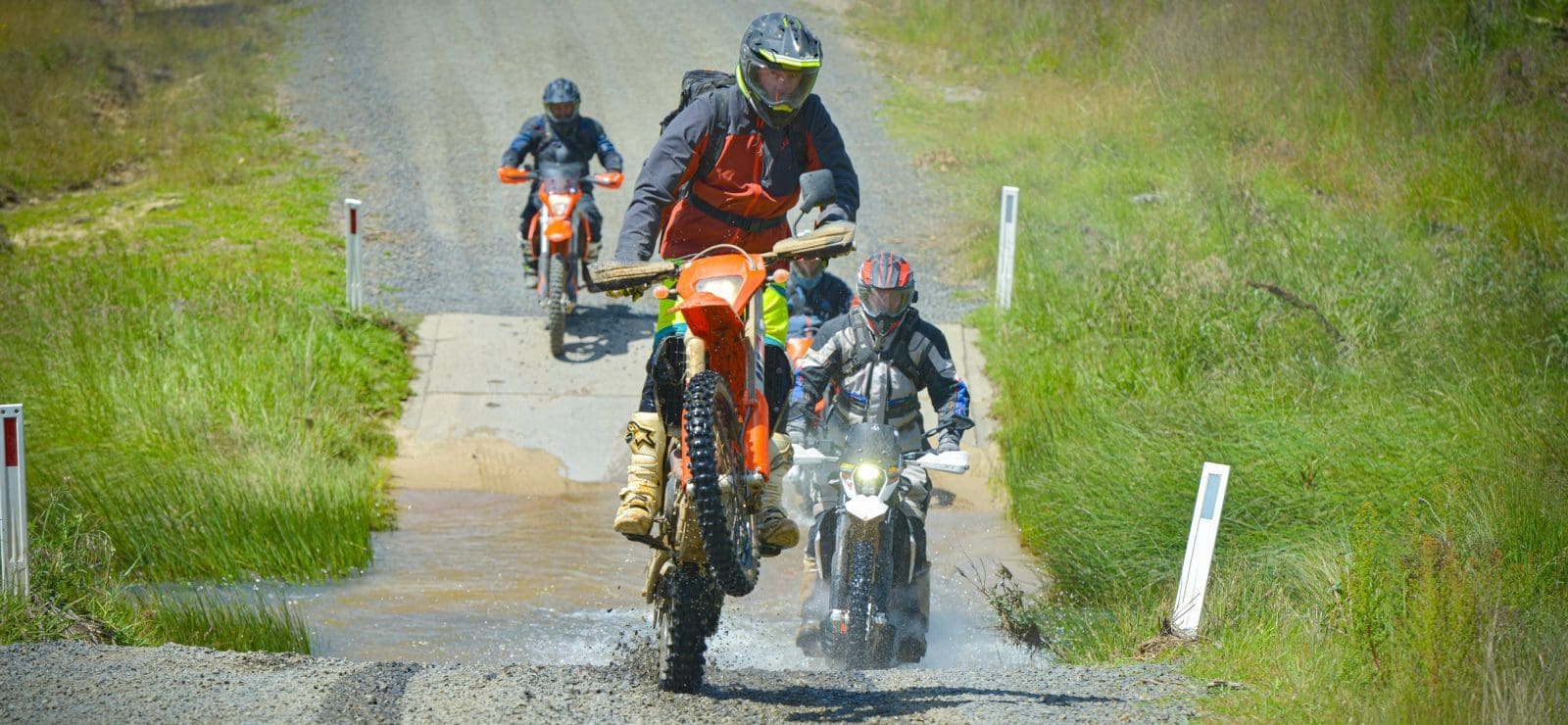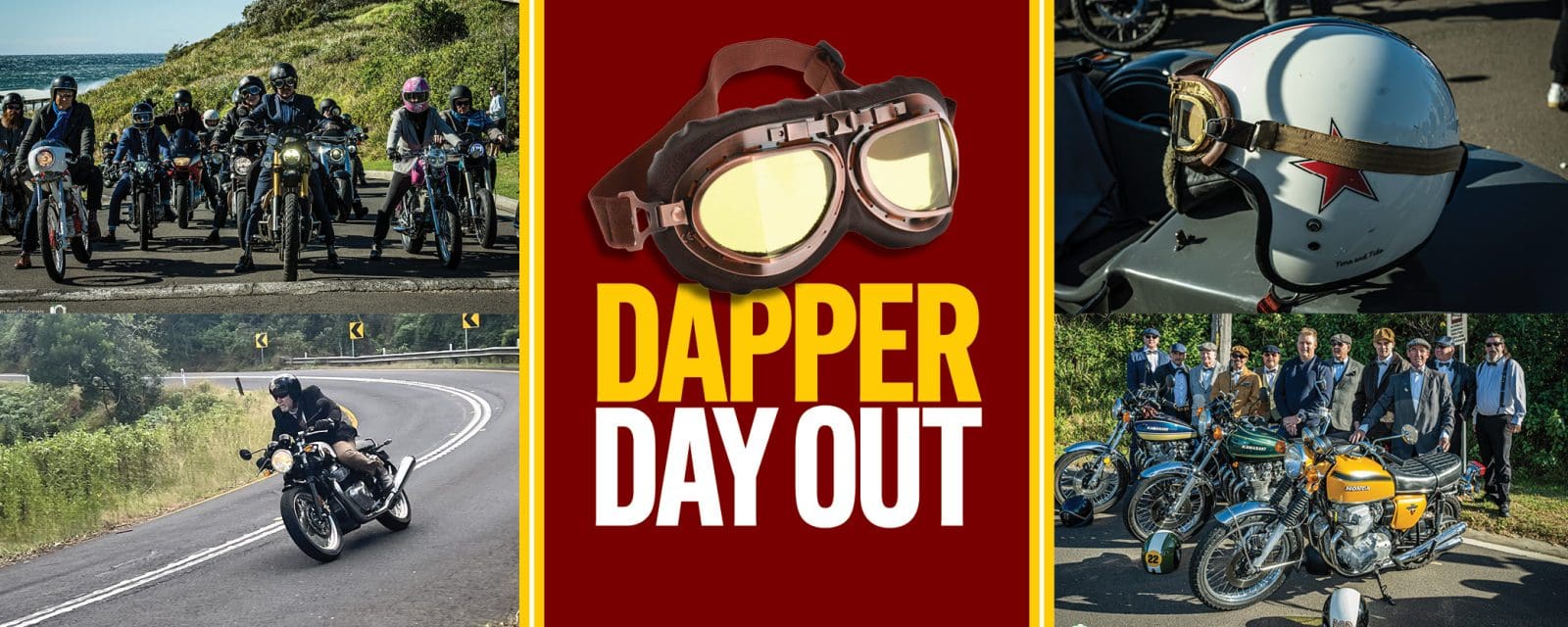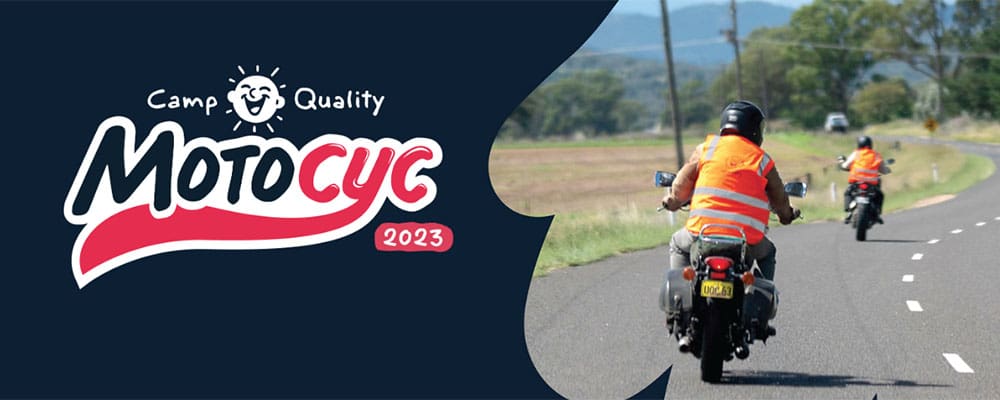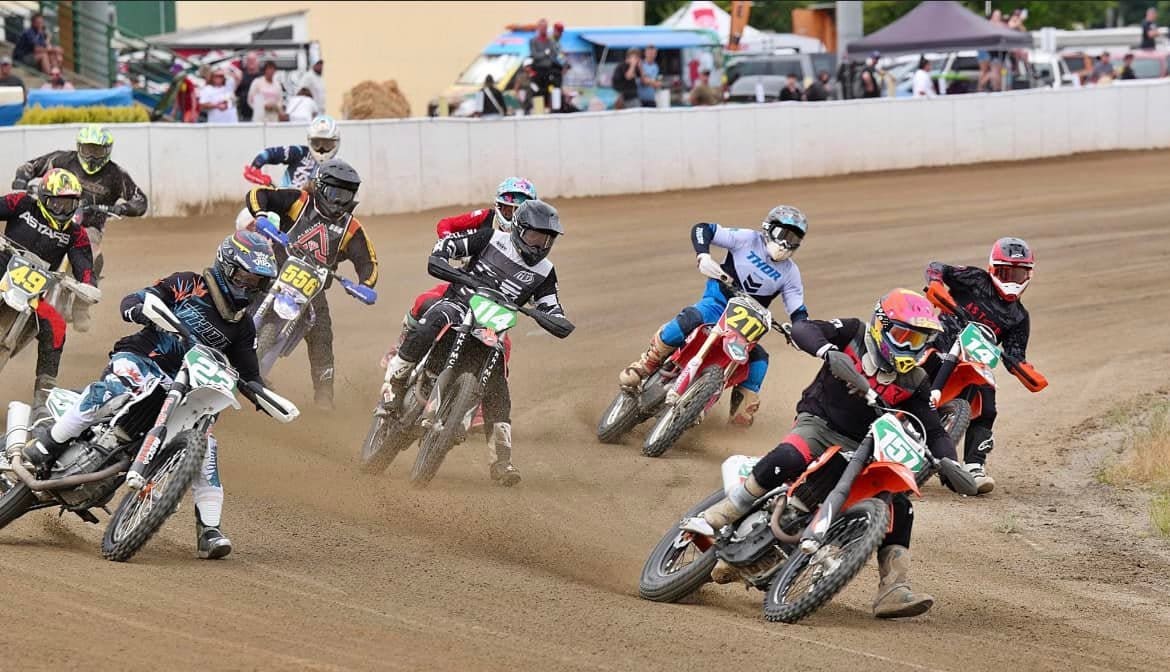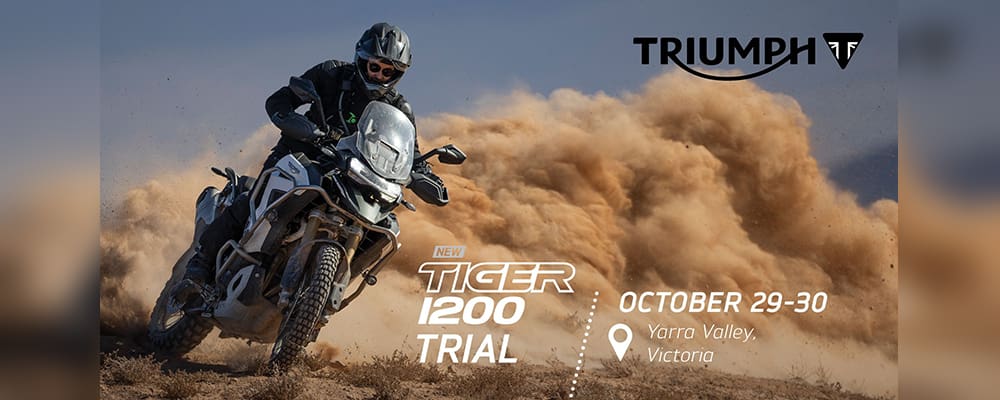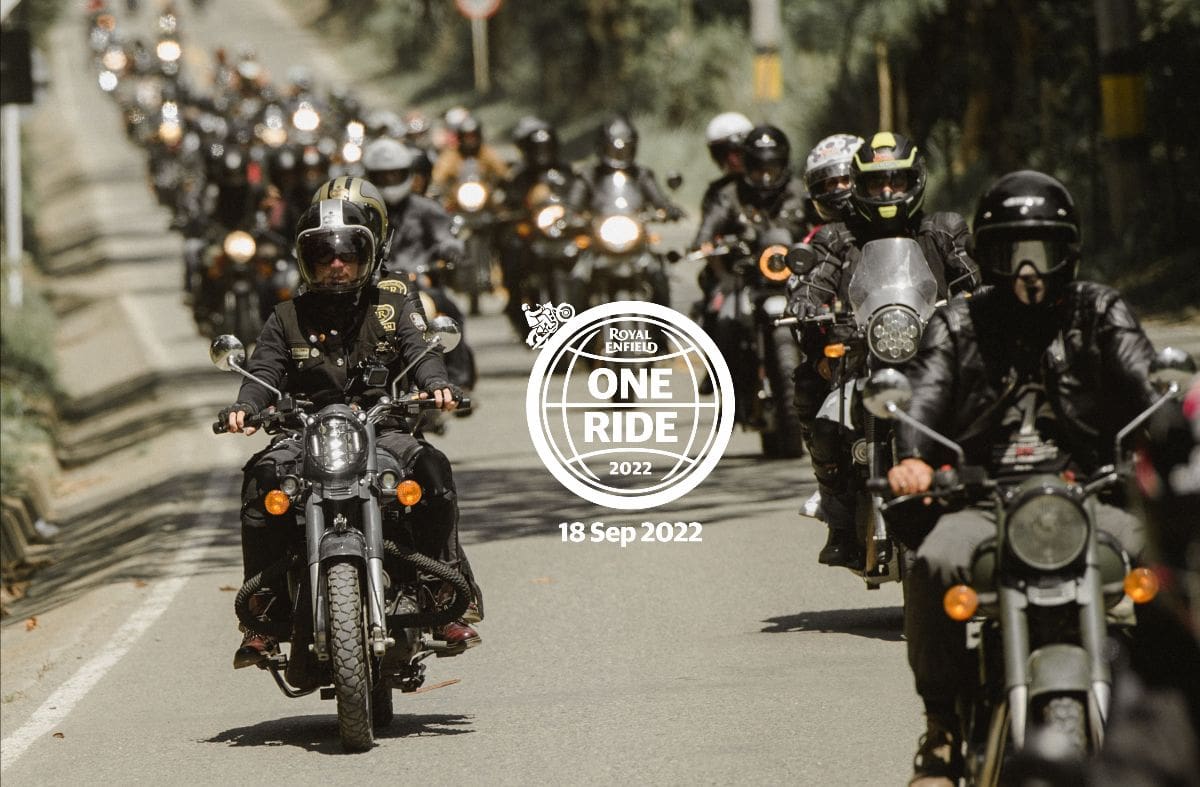“Don’t die, that’s the main rule,” smiles Gary Inman when asked about the rules of Dirt Quake. He’s the founder of Britain’s hugely popular flat track event and he shudders as he recalls four-time World Superbike Champion Carl Fogarty’s 2017 appearance where he crashed heavily, breaking a shoulder, puncturing a lung and breaking 10 ribs.
“Fogarty’s accident was the worst we have had,” he grimaces. “And apparently his wife has banned him from coming back again, which is probably wise because he made a hell of a mess of himself.”
Of course all forms of motorcycle racing carries its dangers, but incidents such as Foggy’s are anathema to the ethos of this most homespun of events.
“When we started we wanted to demystify and take away a lot of the machismo that surrounds racing a motorbike,” Inman explains. “The original idea was that everyone could race Dirt Quake with whatever they had in their shed.”
And judging by the woman dressed in leopard print who was wheeling a tatty Kawasaki twin out on to the dirt oval for the opening heat of the women’s race, it becomes quickly apparent that he has been successful.
Dirt Quake has been hugely popular, capturing the imagination of both the general and bike-racing public in Britain as it offers an enticingly down-to-earth and safe route into motorcycle racing.
“Dirt Quake has been copied the world over,” grins Inman. “It has inspired loads of events in India, America, France and Australia. Australia has an event called the Dust Hustle which was started after our first couple of events. I think there could be pop-up races at events all over the world so you could have a Sand Quake in Dubai or in Margate or on Bondi Beach.”
Inman is one of Britain’s leading motorcycle journalists and the ghost writer of former TT racer Guy Martin’s autobiography. A long-time admirer of the US Flat track scene, he kickstarted Dirt Quake in 2012.
“I loved the look of the bikes from the film On Any Sunday,” he continues. “The big numbers on the riders’ backs, the fat tyres, the wide bars – everything about the aesthetic of it. But there was absolutely nothing in Britain.”
Dirt Quake was born out of Inman’s own determination to race flat track.
“I went along to a meeting to photograph a flat-track race and met someone who had a great bike,’ Inman explains. “I asked him what he raced and he said he had never raced before. He didn’t ride anything on the road either. He just loved the look of the bikes and wanted to go racing so he bought one and went racing. I thought if you can do it then I can do it too, and Dirt Quake grew out of that attitude.”
This year was the seventh running of the event and everyone competing at the Essex Arena wore a helmet and gloves, but lots of folk were in jeans and jackets rather than racing leathers. And for each rider wearing a metal shoe there were almost as many in sneakers or street boots at this most amateur of events.
From the early days the event has always been about racing what you wanted, how you wanted and that attitude still pervades through the bike classes.
“We have a class called ‘Inappropriate Road Bikes’ and we have Choppers,” Inman explains. “In my opinion there is nothing funnier than a chopper trying to race around a speedway track!”
And looking over to see Guy Martin crash his chopped Harley-Davidson and jump up unhurt confirms Inman’s sentiment.
“Inappropriate roadbikes are exactly what they say they are,” he says. “A street bike with knobby tyres, lights and even a number plate, totally inappropriate for racing on a dirt track.
“The scooter race was one of the most popular classes at Essex and, although women can and do race in every class, there is also a Ladies race. People ask why we do that, but it can be a daunting prospect for anyone who has never raced before to get started,” Inman says. “Hardly anyone at the first meeting had raced a motorbike before, but I see people here today who have done four or five Dirt Quakes. It’s become that festival thing where they come every year and keep their wristbands on for weeks afterwards as a reminder.”
There were about 80 entries at Essex and a slightly spartan crowd spectating around the arena which was hosting its last ever race. After over 50 years of hosting speedway and four wheeled banger racing, the developers are moving in and houses will soon stand where the shale once lay. It felt like the perfect venue for an event where everyone is running on a shoestring budget.
“This is the first and last flat track race there will ever be here.’ Inman reflets. “Speedway is very competitive in Britain but, in terms of a live spectator sport, it’s not getting the crowds it used to so there has been a lack of investment. We come here because it’s safe. It’s safe for the spectators and it’s safe for the racers because it’s got air fences and catch fencing.”
Inman himself continues to compete in the premier class Hooligans race at Dirt Quake. Harleys, Ducatis and Indians are the weapons of choice in what is effectively a taster for the British Flat Track championship where Inman and Co. try to emulate the exploits of their American heroes.
“The championship has been going for about 12 years now and it’s grown,” Inman says. “It has a really lovely club feeling to it. There’s no prize money, quite low entry fees and it’s grown massively year on year to the point where at a good race meeting about 130 or 140 entries will show up.”
Other riders like 20-year-old Leah Tokelove or Hooligans race winner Gary Birtwistle understand the route a Dirt Quake introduction to racing can follow. Both racers love flat tracking in a country with very little heritage of competing on dirt ovals. Dirt Quake has pushed open a door.
Tokelove is one of the leading lights in the Hooligans class that runs alongside the British Flat Track championship as well as at Dirt Quake. Her results have been sufficiently impressive to earn her a bike from Indian for the 2018 season.
“I’ve been racing since I was 13 and on the dirt since 1,” Leah says. “I’m hooked now. I like beating the guys and shaking things up!”
The highlight of her flat-track career to date was winning the Wheels and Waves event in Biarritz, France last season.
“That was a big deal,” she grinned. “Freddie Spencer gave me the trophy and I covered him in champagne afterwards!”
Birtwistle won the Dirt Quake Hooligans race and the 2018 championship in the process, scooping yet another new Indian Scout.
“I have never raced for a prize and I wasn’t used to that kind of pressure,” he admitted afterwards. “I race in the British Flat Track championship and when Dirt Quake started up I wondered if it would devalue that competition. I thought it might be dangerous, but now I see that there are so many people having so much fun. It is cool and is helping the whole scene to grow.”
With Dirt Quake up and running and providing British flat tracking racing with a much-needed boost, Gary Inman has gone on to organise Snow Quake in the Swiss Alps and similar events in America. But he has now sold his interests in these annual festivals to North One television.
North One has risen to prominence in small world of bike-racing television as the producers of Guy Martin’s successful TV series and, until last year, of the Isle of Man TT races.
More than one competitor at the Essex Arena voiced the view that this has already produced a shift in the ethos and atmosphere of Dirt Quake. Listening to the rider’s briefing certainly put paid to any hopes of any rebellious displays as riders were warned by a schoolmasterish administrator that they would be sent home if they rode their bikes in the paddock.
It does seem like a strange fit to take something so basic and amateurish and package it up for television with all its commercial realities. Inman admits it is still a work in progress.
“Dirt Quake is now on prime-time television with Snow Quake joining, too,” he says. “I think North One is still finding its feet with what the priority is. It’s very hard to find the balance between doing a very slick TV show which requires quiet time between races for interviews and things like that, and keeping the crowd amused.
“When we used to do it it was non-stop noise and daft stuff going on all day and that didn’t really work for the TV people.”
WORDS & PHOTOGRAPHY STEPHEN DAVISON

